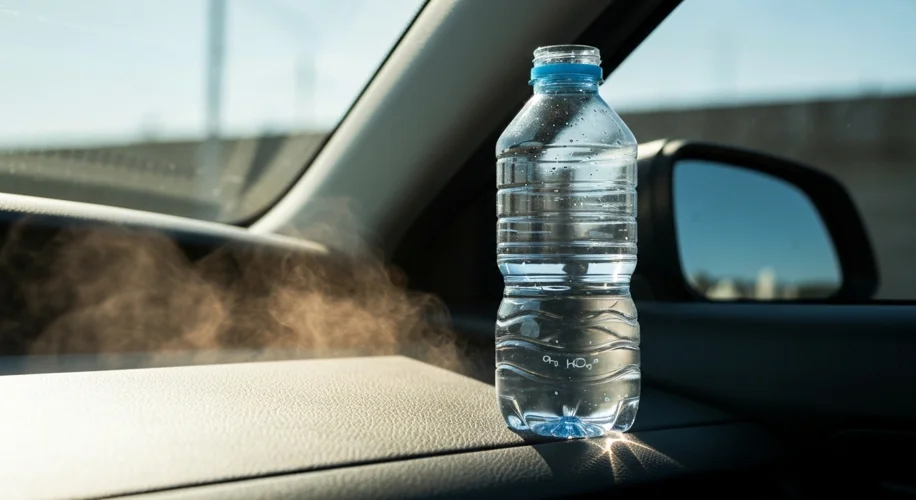Did you know that leaving plastic water bottles in a hot car can have some concerning implications for your water? It’s something many of us do without a second thought, especially on a warm day. But as experts are warning, this simple habit might be introducing more into our bodies than just hydration.
I’ve spent years studying the effects of heat, particularly in urban environments, and I’ve learned that what we can’t see often matters most. Recent findings are highlighting this principle when it comes to our everyday plastic water bottles.
The Heat is On: What Happens Inside the Bottle?
When plastic, especially PET (polyethylene terephthalate) – the type commonly used for water bottles – is exposed to high temperatures, something interesting happens at a molecular level. Heat can accelerate the breakdown of the plastic. This process can lead to chemicals that are used in the manufacturing of the plastic, like antimony and BPA (bisphenol A), leaching into the water. Antimony is a heavy metal that can have various health effects, and BPA is a chemical that has been linked to a range of health concerns.
Think about it: cars can become incredibly hot, much hotter than the outside temperature, creating a greenhouse effect. Even on a moderately warm day, the interior of a car can reach temperatures well over 100°F (38°C) or even higher.
‘Just Because You Cannot See It, Does Not Mean It Is Not There’
This quote, often heard in scientific contexts, is particularly relevant here. You can’t see these chemicals leaching into your water, but that doesn’t mean they aren’t present. While the levels might be low initially, repeated exposure, especially to higher temperatures, can increase the concentration.
Experts are concerned about the potential long-term health consequences of ingesting these chemicals regularly. While research is ongoing, and the direct impact of these low-level exposures from water bottles is still being studied, the precautionary principle suggests we should be mindful.
What Can We Do? Simple Steps for Safer Hydration
Given this information, it’s a good idea to adopt a few simple habits:
- Keep Water Cool: Try to store your water bottles out of direct sunlight and extreme heat. Keep them in a cooler, in the shade, or in the main cabin of your car where temperatures are more moderate.
- Opt for Alternatives: Consider using reusable water bottles made from materials like stainless steel or glass. These materials are generally more stable at higher temperatures and don’t leach chemicals in the same way.
- Hydrate Wisely: If you do have a plastic water bottle that’s been in a hot car, it might be best to empty it and refill with fresh water from a cooler source, or better yet, use a different bottle altogether.
As someone who is deeply invested in understanding how our environment affects our health, this is a reminder that small, everyday choices can have a significant impact. By being aware of these potential risks and making minor adjustments, we can ensure our hydration is as safe and healthy as possible. Let’s prioritize our well-being by making informed choices, especially when it comes to something as fundamental as the water we drink.

